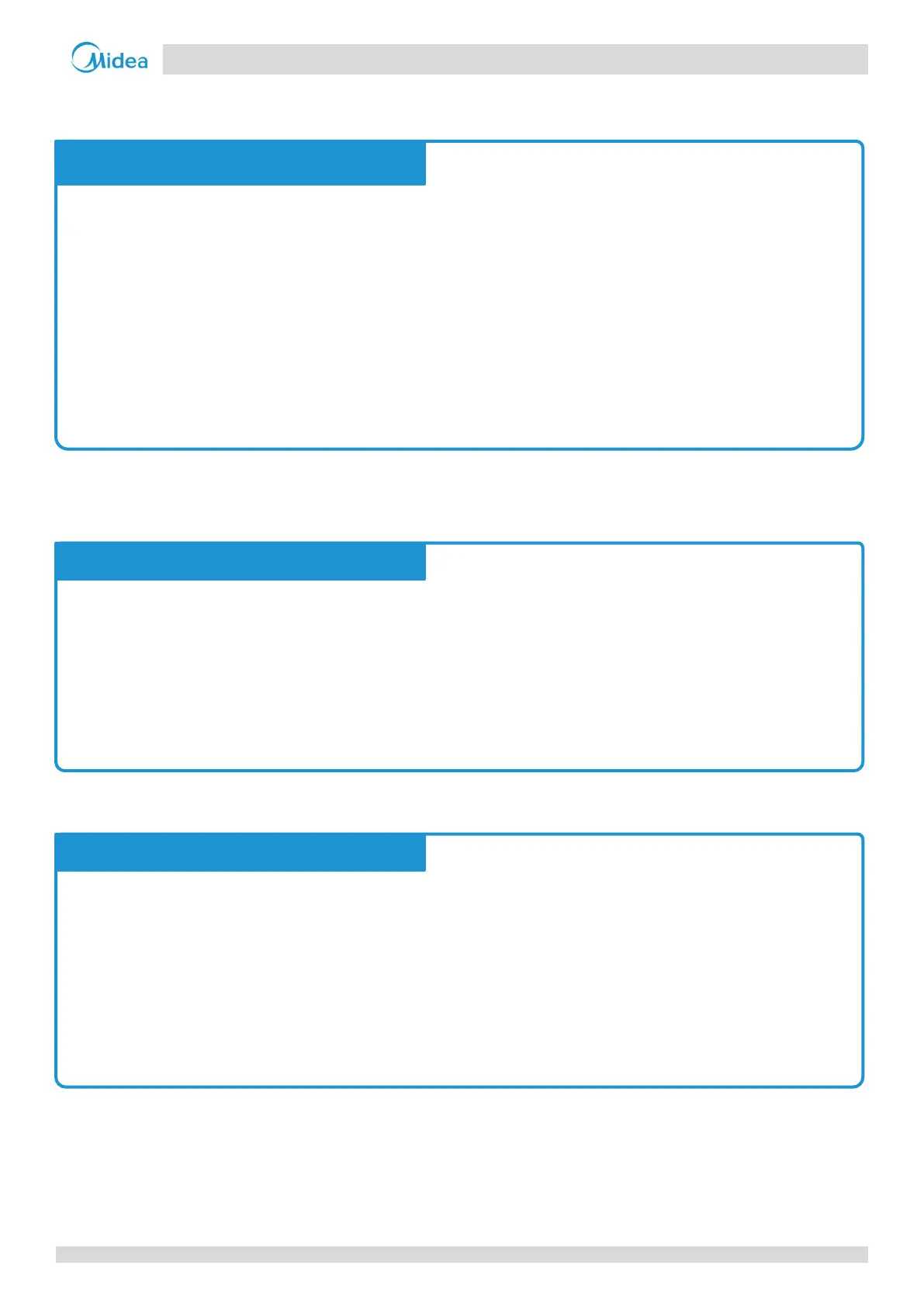VC Pro VRF 50/60Hz
163
Part 3 - System Design and Installation
5.2 Storing Copper Piping
5.2.1 Pipe delivery, storage and sealing
5.3 Manipulating Copper Piping
5.3.1 De-oiling
5.3.2 Cutting copper piping and removing burrs
Ensure that piping does not get bent or deformed during delivery or whilst stored.
On construction sites store piping in a designated location.
To prevent dust or moisture entering, piping should be kept sealed whilst in storage and until it is about to be
connected. If piping is to be used soon, seal the openings with plugs or adhesive tape. If piping is to be stored for
a long time, charge the piping with nitrogen at 0.2-0.5MPa and seal the openings by brazing.
Storing piping directly on the ground risks dust or water ingress. Wooden supports can be used to raise piping off
the ground.
During installation, ensure that piping to be inserted through a hole in a wall is sealed to ensure dust and/or
fragments of wall do not enter.
Be sure to seal piping being installed outdoors (especially if being installed vertically) to prevent rain entering.
Lubrication oil used during some copper pipe manufacturing processes can cause deposits to form in R410A
refrigerant systems, causing system errors. Oil-free copper piping should therefore be selected. If ordinary (oily)
copper piping is used, it must be cleaned with gauze dipped in tetrachloroethylene solution prior to installation.
Caution
Never use carbon tetrachloride (CCl
4
) for pipe cleansing or flushing, as doing so will seriously damage the system.
Use a pipe cutter rather than a saw or cutting machine to cut piping. Rotate the piping evenly and slowly, applying
even force to ensure that the piping does not become deformed during cutting. Using a saw or cutting machine
to cut piping runs the risk of copper shavings entering the piping. Copper shavings are difficult to remove and
pose a serious risk to the system if they enter the compressor or block the throttling unit.
After cutting using a pipe cutter, use a reamer/scraper to remove any burrs that have formed at the opening,
keeping the opening of the piping downwards to avoid copper shavings from entering the piping.
Remove burrs carefully to avoid scratches, which may prevent a proper seal being formed and lead to refrigerant
leakage.
